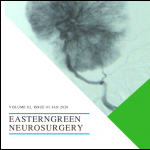Prevalence of Neurocysticercosis among Seizure patients: - Single Center Study
DOI:
https://doi.org/10.3126/egn.v2i1.27454Keywords:
Cysticercosis, Eastern Nepal, Neurocysticercosis, SeizureAbstract
Background and purpose: The incidence of Epilepsy is high all over Nepal. This study was conducted to analyze the relationship between the incidence of seizure and neurocysticercosis (NCC) among patients admitted to our hospital in Far Eastern Nepal.
Material and method: A descriptive cross-sectional study was done among patients diagnosed as NCC with a seizure disorder in B & C Medical College Teaching, from September 2017 to August 2018. Neurocysticercosis was diagnosed based on Computer Tomography (CT), Magnetic Resonance Imaging (MRI), clinical features and laboratory investigations matching Del Brutto’s absolute and major criteria.
Result: 103 patients were admitted to the hospital with clinical features of seizure disorder. Neurocysticercosis was diagnosed in 29(28%) patients. Among them, 21(72.41%) were males and 8(27.59%) were females. Patients presented with Generalized tonic-clonic seizure (GTCS) were 18(62%) and 3(10.35%) patients had focal seizures. Focal Seizure with secondary generalization (FSSG) was seen in 5(17%), 2(7%) had status epilepticus and 1(3.45%) patient had presented with absence seizure. Most of the patients 18(62%) had a calcified stage of NCC with perilesional edema in neuroimaging. Phenytoin was the most commonly used intravenous antiepileptic drug (AED) followed by Levetiracetam and Sodium Valproate. Carbamazepine was the most common oral AED used.
Conclusion: NCC is the most common finding among seizure patients admitted to our hospital. The incidence of NCC is high in Eastern Nepal. Poor hygiene, insanitation, low socioeconomic status and lack of awareness were the key factors in spreading NCC.




